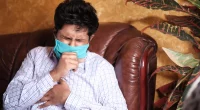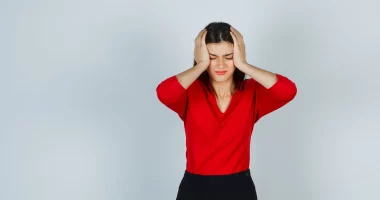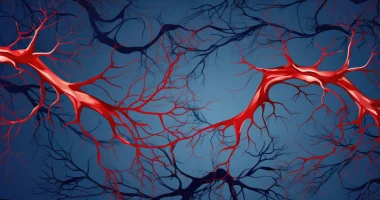Alopecia areata is when people lose their hair in spots on their heads or sometimes other places on their bodies. It happens because the body’s immune system mistakenly attacks hair follicles.
Around 2 out of every 100 people around the world will have alopecia areata at some point. In the United States, it’s believed that up to 6.8 million people have it.
Men and women seem to get it at about the same rate.
Good news for most people with alopecia areata: about 8 out of 10 people will see their hair grow back on its own within a year.
Symptoms
When someone has alopecia areata, they might notice smooth, round patches where their hair used to be around for a few weeks. Usually, these patches show up on the scalp, but they can also appear on other areas of the body.
At first, there might be raised spots or bumps called follicular papules. These can be in reddish patches, about an inch across, but sometimes they’re bigger.
It can start with one patch or a few, and then more patches might develop over weeks or months.
Because the follicles, which are like the roots of hair, are affected, hair tends to fall out from these patches.
Sometimes, there can be changes in the toenails and fingernails too.
For some people, the hair develops back eventually, but for others, it might not grow even after the patches disappear.
Losing hair can be really tough for people. It can make them feel anxious or sad, even after the hair grows back.
Causes
Alopecia areata isn’t something you can catch from someone else. It’s a condition where the body’s defense system, called the immune system, attacks the hair roots by mistake, thinking they’re bad germs like bacteria.
Most individuals with this condition are healthy otherwise, and they don’t have any other skin issues. It can start at any age, however, it’s more common in teenagers, kids, or young adults.
Sometimes, it runs in families because of genes. About 1 in 5 people with alopecia areata have someone else in their family who is also affected by it. If someone in your family had it when they were younger than 30, there’s a bigger chance you might get it too. If a parent has it, there’s a 50-50 chance their child might have it too.
Individuals with alopecia areata might also have other health problems like thyroid issues, eczema, allergies, or asthma more often than others.
Treatment
With early medication, alopecia areata can be reversed. Around 80 people out of 100 with this condition see their hair grow back without any medication within a year. But if hair doesn’t grow back, there are treatments available.
Steroid Injections
These can help with tiny patches of hair loss. A medicated solution is inoculated into the scalp more times. This stops the immune system from targeting the hair follicles. In 4 weeks, this medication might help hair regrow. It can be repeated every few months. Sometimes, hair growth is permanent, but other times it’s temporary.
Topical Steroids and Steroid Tablets
These are often prescribed, but it’s not clear how well they work in the long run. They might help hair regrow, but they can also have side effects like itching, stomach ulcers, diabetes, and sometimes hair growth in unwanted areas. The longer you use these treatments, the more likely you are to have side effects.
Immunotherapy
This is the best treatment for complete hair loss. The patient applies a substance called diphencyprone (DPCP) to the bald skin once a week, in increasing amounts. Hair usually starts to regrow after about 3 months for those who respond to the treatment. However, there can be side effects like mild dermatitis, allergic reactions, or a serious skin reaction. Adjusting the rate of dose increase might help. In rare cases, the patient might develop vitiligo, which causes patches of light-colored skin. Hair loss might continue even after stopping the treatment.
Dithranol Cream
This is not as effective as immunotherapy and can cause more skin reactions and itching. It can also stain the hair and scalp.
UV Light Treatment
Having light therapy sessions two to three times a week in the hospital might help after about 12 months. However, not everyone responds to this treatment.
Minoxidil
This might help a bit.
Natural remedies
For people feeling shy about their hair loss, there are some things they can try:
- Choosing a Hairstyle: Picking a hairstyle that hides the bald spots can help.
- Wearing Wigs or Scarves: They can wear wigs, scarves, hairpieces, or hats to cover up.
- Shaving the Head: Some people choose to shave their head completely.
- Eyebrow Makeup or Tattoo: They can use makeup or get a tattoo to fill in their eyebrows, which is called dermatography.
There are some other treatments out there, like massage, aromatherapy, or acupuncture, but it’s not proven yet if they really work for alopecia.
Dealing with alopecia can be tough, but it’s often temporary, and there are ways to manage it.
If someone is worried about their hair loss, it’s a good idea to talk to a doctor or find a support group.
Hair loss
Hair loss, known as alopecia areata, happens in small spots, which can be oval or round. These spots are soft and smooth, with no hair. It can happen on the scalp, beard, or any other hairy part of the body.
Sometimes, there might be a slight pain or tingling in these spots. Hair might grow back in these areas, either temporarily or for good.
When hair falls out from the scalp, it often happens quickly, and more on one side than the other.
People who are affected with alopecia areata might notice that their hair becomes thinner towards the bottom, closer to where the hair comes out of the skin.
Summary
Dealing with hair loss, especially due to conditions like alopecia areata, can be challenging both emotionally and physically. While treatments like steroid injections, immunotherapy, and light therapy can help, there’s no one-size-fits-all solution.
Natural remedies and alternative therapies may offer some relief, but their effectiveness varies. It’s important for individuals experiencing hair loss to explore their options, consult with healthcare professionals, and seek support from local groups or online communities.
Remember, hair loss is often temporary, and finding ways to cope and manage can make a big difference in one’s quality of life. With patience, understanding, and the right support, it’s possible to navigate the journey of hair loss with resilience and confidence.
External Links








